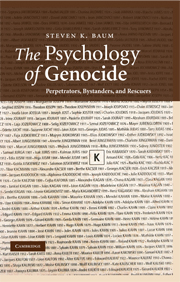Introduction
Published online by Cambridge University Press: 05 June 2012
Summary
As I walked into the Los Angeles Museum of Tolerance at the Simon Wiesenthal Center, I was confronted with a choice of two doors: one was marked Prejudiced, while the second door was marked Not Prejudiced. With the best of intentions, all visitors try to enter through the second door and cannot, as that door remains permanently locked. Consequently all must pass through the prejudiced door. Initial perplexed looks soon subside giving way to the realization that all of us harbor prejudiced and hateful beliefs. Visitors are left to explore more of their assumptions as they move through a maze of photographs and exhibitions.
Meandering through the gallery of inhumane indignity, I saw something else – a look in the eyes of those in the photographs. Several of the photos seemed to capture a feeling state that appeared quite distinct and quite different from others. The eyes of the perpetrators had a mocking and gleeful quality to them. By contrast, the eyes of others who were helping the victims held an alertness, alacrity, and kindness. And a third group's eyes remained a mystery; they appeared to be staring into space as if they were watching the whole thing on television.
- Type
- Chapter
- Information
- The Psychology of GenocidePerpetrators, Bystanders, and Rescuers, pp. 1 - 8Publisher: Cambridge University PressPrint publication year: 2008
- 1
- Cited by



